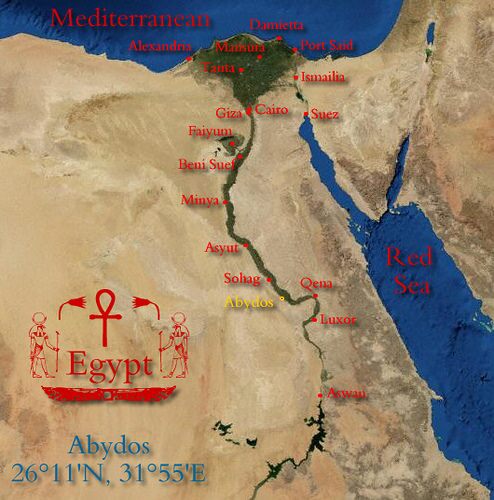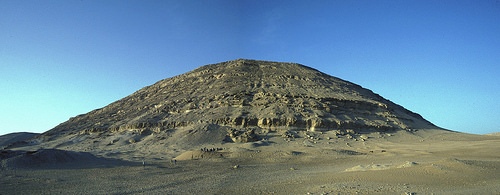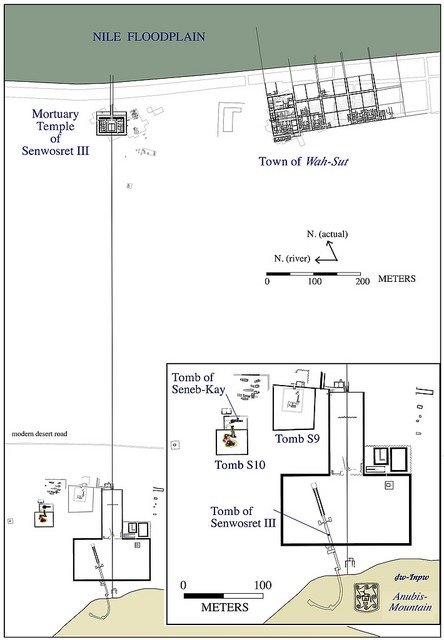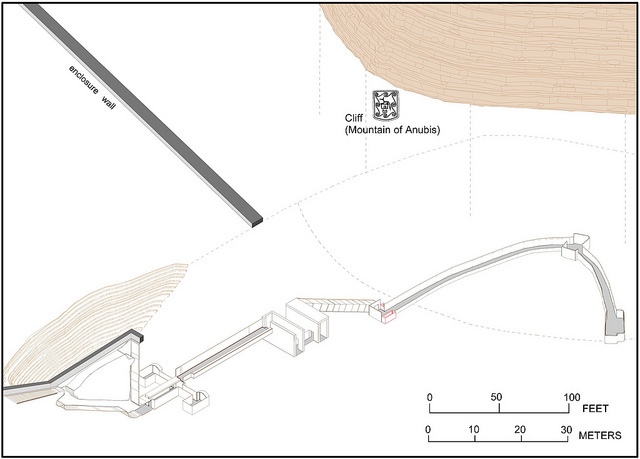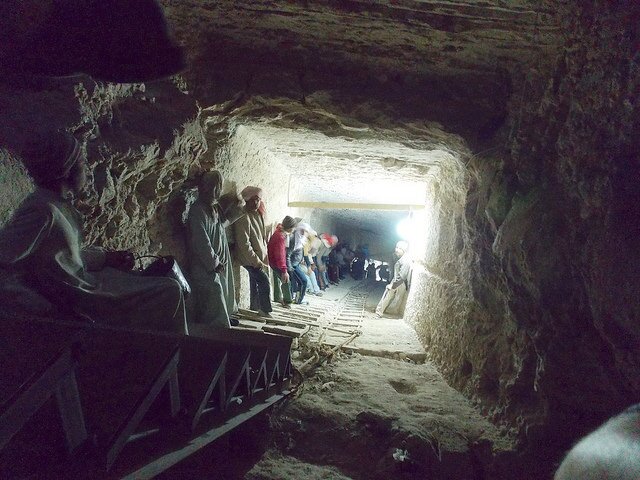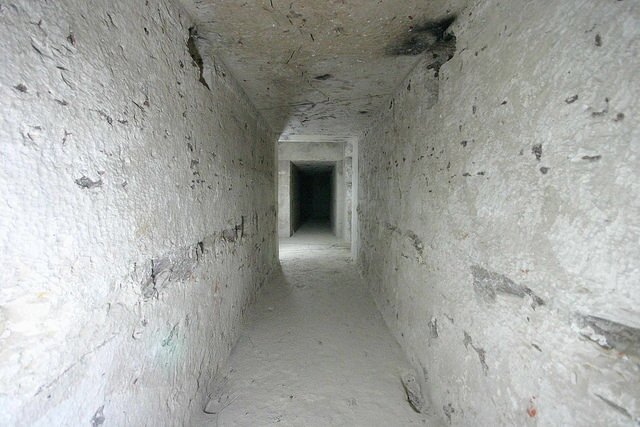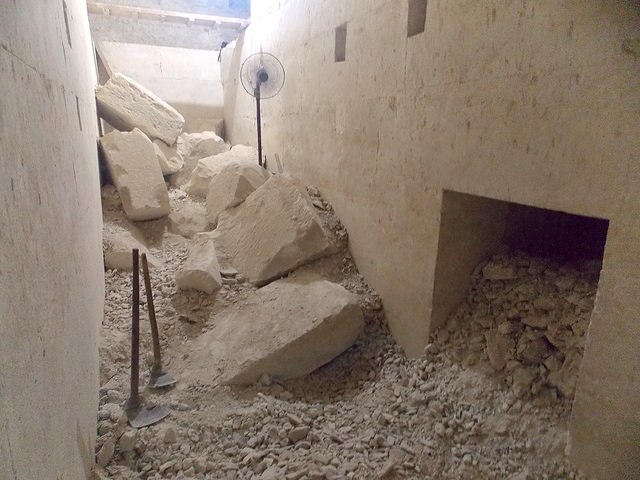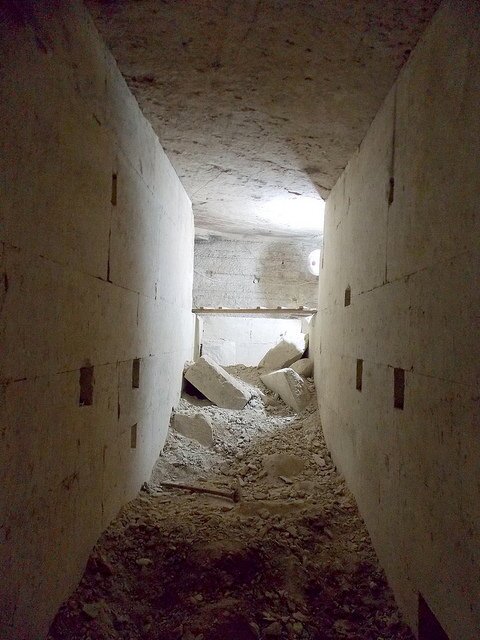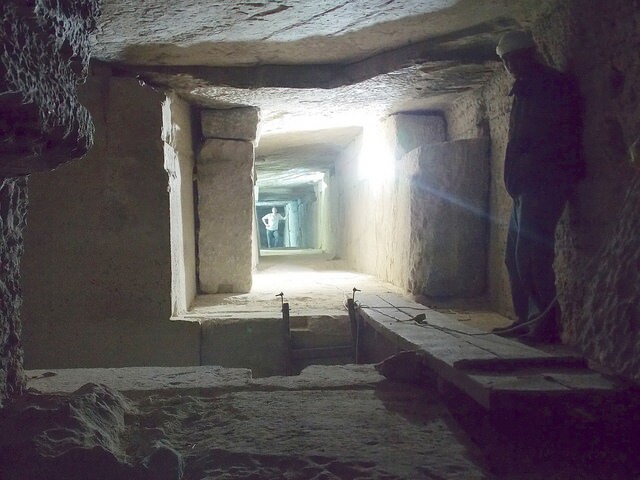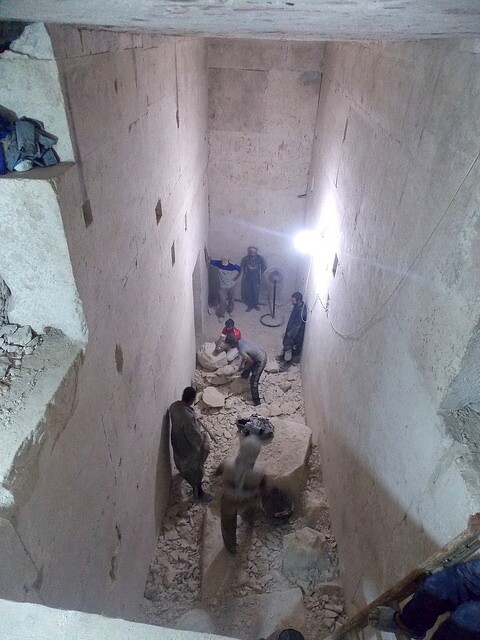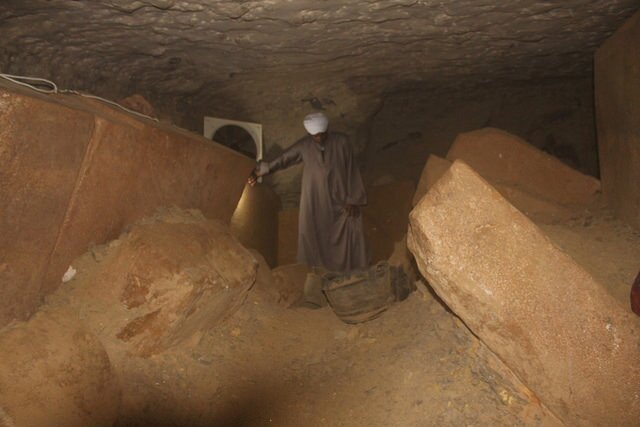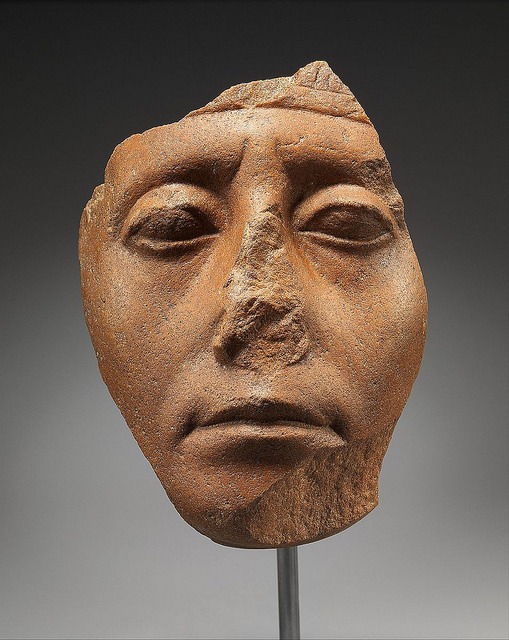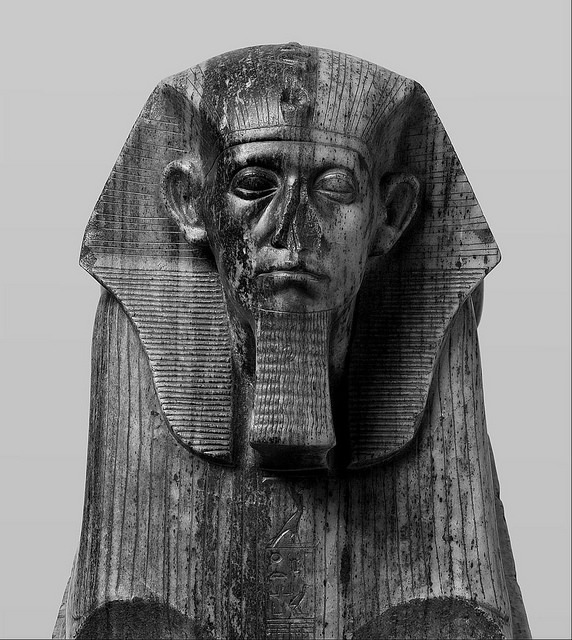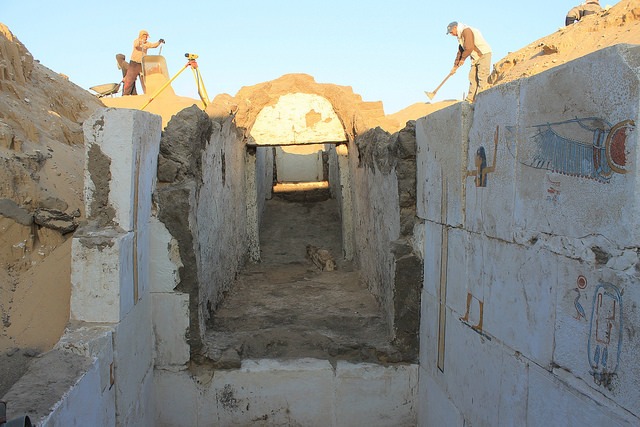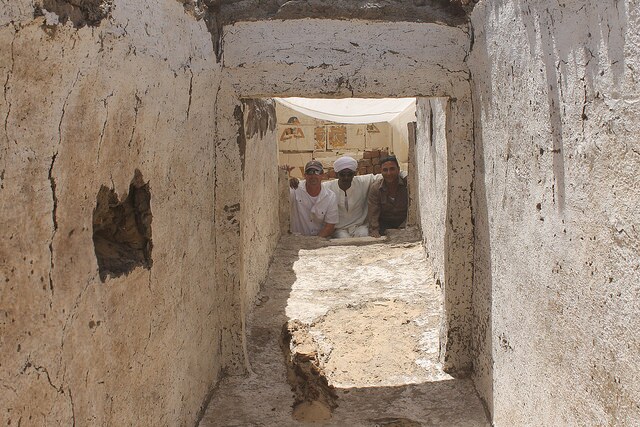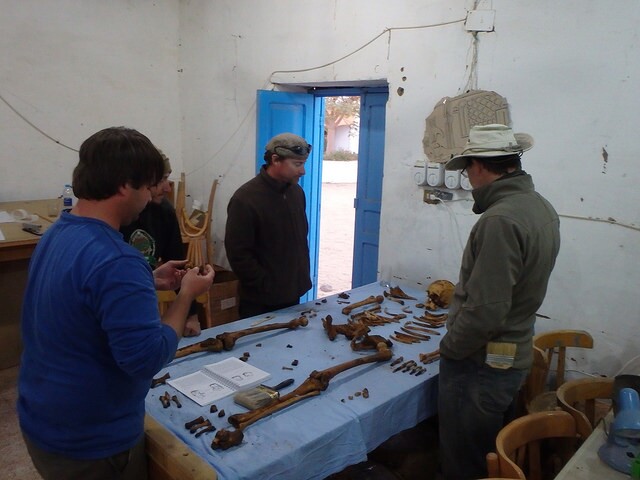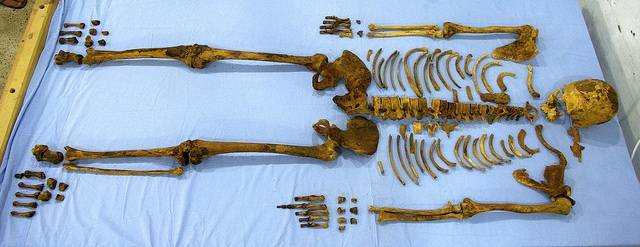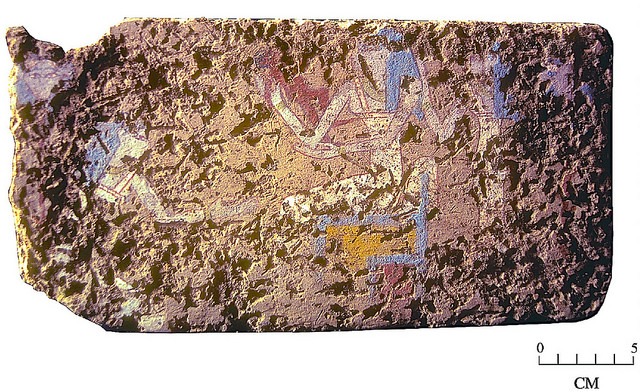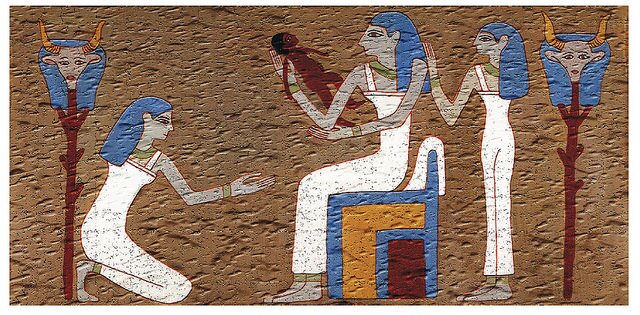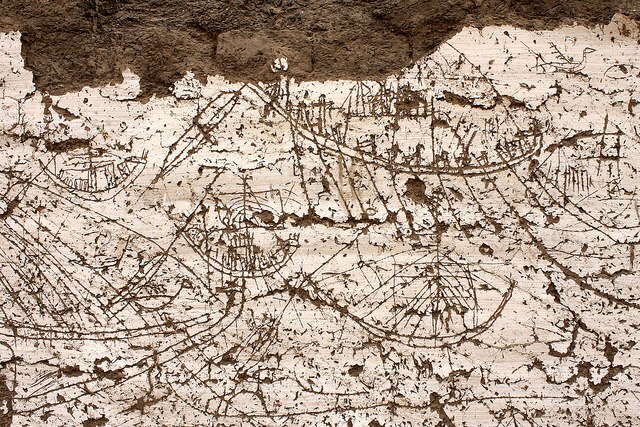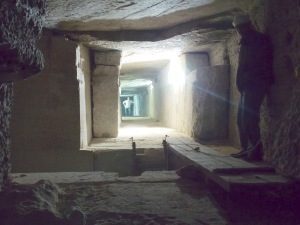
The tomb of King Senwosret III, one of the most renowned pharaohs of ancient Egypt’s Middle Kingdom, is expected to open soon, allowing tourists to appreciate the architecture of Egyptian builders who constructed the burial complex almost four thousand years ago, according to Dr. Josef Wegner, Associate Curator of the Egyptian Section of the University of Pennsylvania Museum of Archaeology and Anthropology (Penn Museum). He has been excavating in Abydos, where the tomb is located and one of the oldest cities of ancient Egypt, for decades.
Dated to 1850 BC, it is the largest tomb at Abydos. The tomb measures 200 meters in length and 45 meters deep. To visualize how massive this is, one would need to imagine a 13 story building underground. “The architecture is amazing,” says Wegner. “It’s like going into a pyramid. It’s architecture is symbolic – depicting the sacred journey into the afterlife.”
The entrance of the tomb faces westwards (symbolizing death, because the sun sets in the west) and then the underground complex curls under a sacred natural mountain, anciently known as Anubis-Mountain, to face the eastern horizon, the direction from which the sun rises, symbolizing rebirth, explained Wegner. “For the Egyptians, that the sun vanishes in the west and magically rises in the east is one of the secrets of the universe, giving them the power of rejuvenation,” he said.
The burial complex features chambers with ceilings six meters high, as well as narrow passageways with blocking stones. The chambers are connected to each other with sloping passages. To navigate the tomb structure, archaeologists, while exploring it, had to slide down at approximately a 30 degree angle. Some blocking stones in these passages weigh as much as 40 to 50 tons. The air inside is stuffy, which makes some people uncomfortable, Wegner admitted. “Some people get a little nervous going into it. When we first opened it, it was full of debris, so we had to crawl on our hands and knees and slither like a snake.”
Luckily, tourists will not have to slither like snakes when they visit the tomb. Stairs with handrails, lights, and a ventilation system were installed and debris and broken blocking stones were removed to make it possible for visitors to walk upright. Work is currently underway to complete the signage in the tombs, and to prepare a parking area for buses, Wegner said.
The significance of the tomb
Although first discovered and explored in 1901 by Arthur Weigall, the tomb was not systematically excavated until Wegner and a team reopened it in 2005 with a plan for full excavation, publication and restoration of the tomb. Since then, more detailed features of the tomb structure have been revealed. It was found to be devoid of wall decoration, but its interior was lined with well-dressed masonry of Tura limestone and red Aswan quartzite. The burial chamber contained the broken remains of the king’s granite sarcophagus and canopic box, and was protected by an elaborate system of massive stone blocks and architectural techniques for concealing the royal burial’s location. Several of the blocking stones weighed over 50 tons, designed to prevent access by tomb robbers into the burial chamber itself.
Most significantly, the Senwosret III tomb is now the first known example of a hidden royal tomb, representing a change from the ancient traditional concept of the royal pyramid to that of a royal subterranean complex like those of the later royal burials in the Valley of the Kings at Thebes. Describing the tomb, Wegner and researchers write that “the tomb itself extends beneath the peak of Anubis-Mountain which serves as a substitute for the built pyramid. This name occurs on many clay impressions produced by a necropolis seal that was used extensively in a variety of administrative and ceremonial activities at the tomb site.” The tomb is thus a massively monumental example of a major shift in ancient Egyptian royal burial practices.
__________________________________
Location of Abydos in relation to other ancient sites in Egypt.
__________________________________
Panorama of the landscape of the Anubis-Mountain necropolis. Courtesy Josef Wegner and the Penn Museum
_____________________________________
Overall plan of the complex of Senwosret III at South Abydos. Courtesy Josef Wegner and the Penn Museum
_______________________________________________
Cut-away view of the Senwosret III tomb. Courtesy Josef Wegner and the Penn Museum
___________________________________________________
The tomb features sloping passages between chambers. Courtesy Josef Wegner and the Penn Museum
______________________________________________________
Above and below: Views within the newly revealed massive tomb complex of Senwosret III. Note the remarkable interior of well-dressed masonry. Courtesy Josef Wegner and the Penn Museum
Red Aswan quartzite is a major material feature of the tomb. Courtesy Josef Wegner and the Penn Museum
_______________________________________________________
Who was King Senwosret III?
Much is known about King Senwosret from inscriptions on ancient stone stelae. According to monuments he had erected during his reign, he expanded Egypt’s territory further south, more than any previous ruler, said Adela Oppenheim, a curator in the Egyptian Art Department at the Metropolitan Museum of Art in New York. It set the pace for his followers. “He said that any son who does not keep this border is not his son,” added Oppenheim. He initiated military campaigns in Nubia, an ancient region that spans southern Egypt and northern Sudan. He also built temples, monuments and fortresses (most of which were flooded when the Egyptians built the Aswan Dam in the 1960s), added Wegner.
It is believed that Senwosret III lived between 1878 BC and 1840 BC and that he was the son of Senwosret II, although this is not proven, according to Oppenheim. He had many wives, although it is not known how many.
Historians know what Senwosret III looked like because sculptures of him have survived, including two originals outside of Egypt at the Metropolitan museum in New York. Interestingly, he is the first ancient Egyptian pharaoh who was sculpted as an older man, without a smile on his face, said Oppenheim. “During this period, there was a radical change in how the king was depicted. He is depicted as if he has signs of aging. He is shown frowning. He has wrinkles on his forehead.” The reasons for this are not clear, but some historians say that perhaps this is because Egypt was enduring difficult times during Senwosret’s reign. However, Oppenheim believes that the sculptors were simply trying to show that the pharaoh had the wisdom that comes with age.
____________________________________
Senwosret III at the Metropolitan Museum of Art. Gift of Edward S. Harkness, 1917. http://www.metmuseum.org/art/collection/search/544186
________________________________________________
Senwosret III as a sphinx. Gift of Edward S. Harkness, 1917. http://www.metmuseum.org/art/collection/search/544186
____________________________________
Was King Senwosret III’s body actually buried in the Abydos tomb?
Senwosret had two burial places prepared for himself – a pyramid at Dashur, near Cairo, where he also erected pyramids for his mother, his chief wife and other royal women – and the tomb at Abydos much farther south, which today is an eight hour drive from the Egyptian capital.
But which one was the actual burial place of the king?
While Senwosret III’s mummy was never found, historians are almost certain that he was not buried in the pyramid in Dashur – because archaeologists did not find any pottery or debris, or evidence that a sarcophagus was ever placed there, said Openheim, who is also the co-director of the excavation of the Dashur pyramid of Senwosret III.
In Abydos, on the other hand, archaeologists did find fragments of stone vessels that typically would have been laid in a royal tomb, indicating that the pharaoh was buried there, Wegner said. But no mummy. According to Wegner, it may have been destroyed when ancient robbers were searching for other valuables.
Other tombs to open to the public
In addition to King Senwosret’s tomb, which is the largest tomb in Abydos, visitors will also have access to three other ancient burial places.
One is the smaller tomb of King Senebkay, where visitors will be able to see the skeletal remains of the king who died around 1650 BC, about two centuries after King Senwosret. Unlike King Senwosret, about whom historians know much from ancient inscriptions, virtually the only information that we have about King Senebkay comes from his tomb. The king’s bones are marked with injuries that ended his life, Wegner said. Archaeologists discovered cut marks on the king’s feet and ankles (which suggest that he was attacked from below, perhaps while he was mounted on a horse), as well as injuries to his skull. (It is suggested that he was killed by axe blows to the head after he fell to the ground.) “It is the earliest king whose physical remains indicate that he died in a battle,” Wegner said.*
Unlike King Senwosret’s tomb which is not decorated, King Senebkay’s tomb is adorned with hieroglyphics, Wegner said.
Two tombs of brother kings King Neferhotep I and King Sobekhotep IV will also become accessible to the public, Wegner added. In ancient times, these two tombs probably had small pyramids, although these pyramids have not survived, Wegner said. He explained that the design of the tombs indicate that they were once capped by a superstructure.
In all, the Abydos necropolis contains the tombs of at least 12 kings, “a whole forgotten dynasty of kings,” with the tomb of King Senwosret III being the oldest and the largest, said Wegner.
The tombs at Abydos are younger than the Great Pyramid of Giza, which dates to 2500 BC, yet older than the tombs in the Valley of the Kings, which span the period between 1500 and 1000 BC, Wegner said.
According to Wegner, ancient Egyptians stopped building pyramids and began to instead construct underground burial tombs due to a change in their religious beliefs and also in an attempt to keep out robbers. “Many people think hiding the tomb underground without a pyramid on top of it helped to protect it,” he said.
But Oppenheim suggests that ancient Egyptian consideration for building pyramids on top of tombs had more to do with the local landscape. They did not build pyramids in mountainous regions such as Abydos. “The mountains served as a marker that in some way was analogous to a pyramid,” she said.
______________________________________
General view of the tomb of the lost pharaoh Senebkay. Courtesy Josef Wegner and the Penn Museum
______________________________________
View through into the burial chamber of Senebkay. Courtesy Josef Wegner and the Penn Museum
_______________________________________
Above and below: The skeleton of Senebkay. Courtesy Josef Wegner and the Penn Museum
____________________________________________________
A special artifact
While visitors will be able to descend into the tombs and see the ancient architecture, the smaller artifacts that archaeologists found at Abydos will not go on display there, Wegner said. Most of these items are currently in storage.
One of Wegner’s favorites is a birthing brick – the first such brick that had ever been found. He discovered it while excavating the house of the mayor in the ancient city (Wah-Sut) near the tombs. The brick depicts a woman holding a new-born child after giving birth. In ancient Egypt, women customarily stood on such bricks when they were in labor, he said. “We have ancient texts describing birth bricks, but no one had discovered one.” The brick dates from 1750 BC to 1800 BC. Although it was unearthed about 15 years ago, it has never been displayed to the public. Wegner said he is not particularly upset about that. “You can open so many museums with the amount of stuff that has been excavated in Egypt, but a lot of stuff just doesn’t ever get displayed,” he said. And although the brick is the first such item to have ever been discovered, Egyptian officials, says Wegner, were not particularly interested in it because it is not made from precious metals.
____________________________________
The magical birth brick depicting the main scene. Courtesy Josef Wegner and the Penn Museum
_____________________________________________________
Painted reconstruction of the main scene on the birth brick. Courtesy Josef Wegner and the Penn Museum
________________________________________________________
Excavations continue at Abydos
Wegner and his crew from the University of Pennsylvania are returning to Abydos this summer to continue excavating.
Archaeologists work by first using magnetometers to create a magnetic map of the area – pieces of pottery and ceramics have good magnetic conduction properties and are an indication that there is something underground, Wegner said. The magnetometer can also detect mud brick structures because mud has iron in it, while the sand itself is mostly silica and has no magnetic properties, Wegner added. (The device works well only after people clear away modern garbage, such as metal cans and coins.)
After that, archaeologists start digging – with the help of their Egyptian workers. Everything, even the tops of the tombs, is buried five to six meters under the desert sand, Wegner said. “It’s not a place where you brush off a little bit of sand.”
Wegner wants to determine if Senwosret’s tomb extends beyond the 200 meters already excavated. If so, it might be the largest tomb of an Egyptian king ever discovered, he said.
He is also looking for a boat house. About two years ago, while excavating in Abydos, he found a building with images of hundreds of boats carved into the walls. He says the building may have served as a burial chamber for the funeral boats that carried the king’s body to the tomb, but nothing remains of the boats themselves because the wood was valuable, so it was probably stolen.
________________________________________
The boat images uncovered in an excavated building at Abydos. Courtesy Josef Wegner and the Penn Museum
_____________________________________________________
What else is next at Abydos? Wegner suggests there is potentially more to discover at Abydos. “We know there are a bunch of other underground buildings in the area,” he said.
Plenty of work for years to come.
__________________________________
*Read more about the discovery of the lost pharaoh Senebkay in the article, The Tomb of the Warrior King, published in the Spring 2015 issue of Popular Archaeology.
_____________________________________________
Receive 30 days free access to the popular new CuriosityStream lineup of documentaries on science, history, nature, and technology as a new Popular Archaeology premium subscriber.
___________________________________________
Travel and learn with Far Horizons.
____________________________________________
This richly illustrated issue includes the following stories: Recent findings shedding new light on the whereabouts of the remains of Philip of Macedon, father of Alexander the Great; how an archaeologist-sculptor is bringing bones of the dead back to life; archaeologists uncovering town life at the dawn of civilization; an exclusive interview with internationally acclaimed archaeologist James M. Adovasio about what makes the Meadowcroft Rockshelter prominent in the ongoing search for the first Americans; what archaeologists are finding at the site of the ancient city of Gath, the home town of the biblical Philistine giant, Goliath; and how scientists are redrawing the picture of human evolution in Europe. Find it on Amazon.com.

